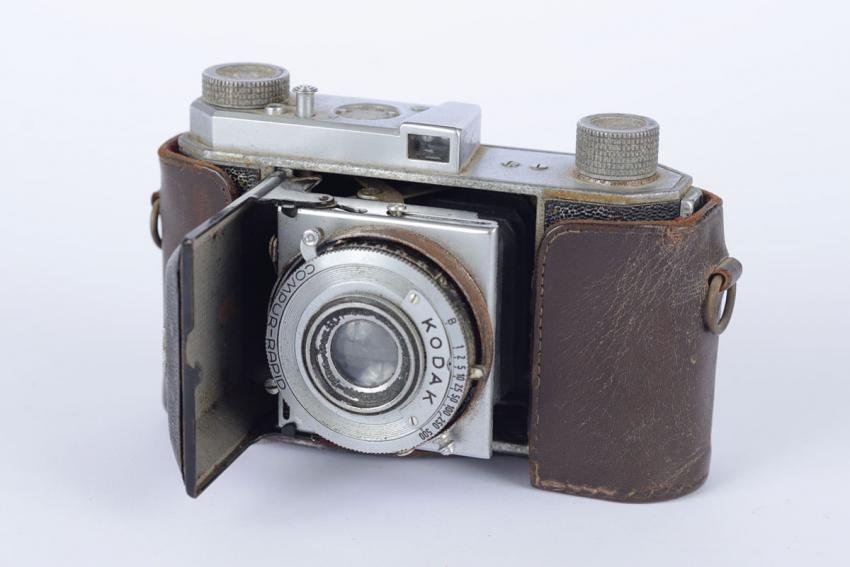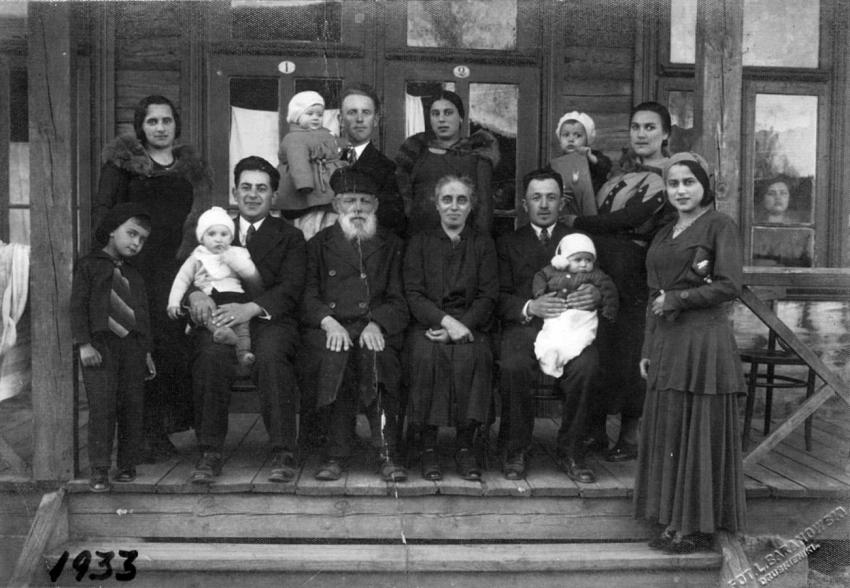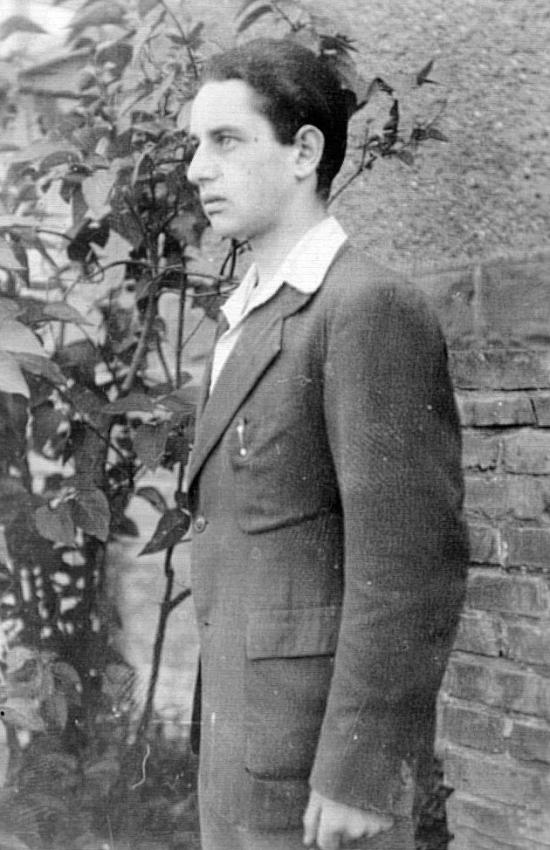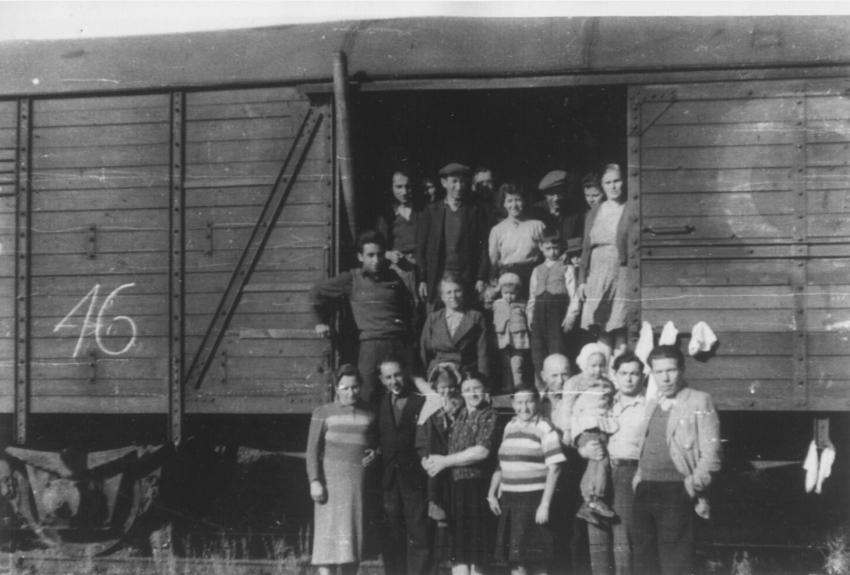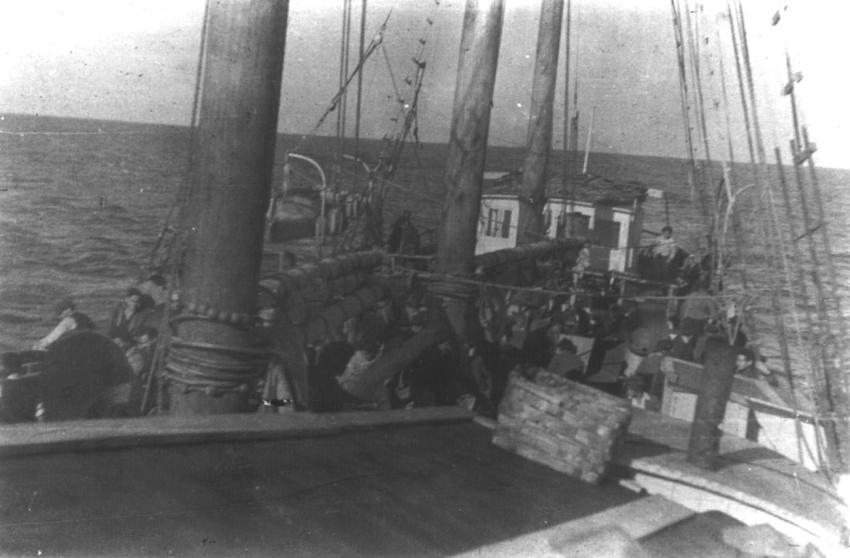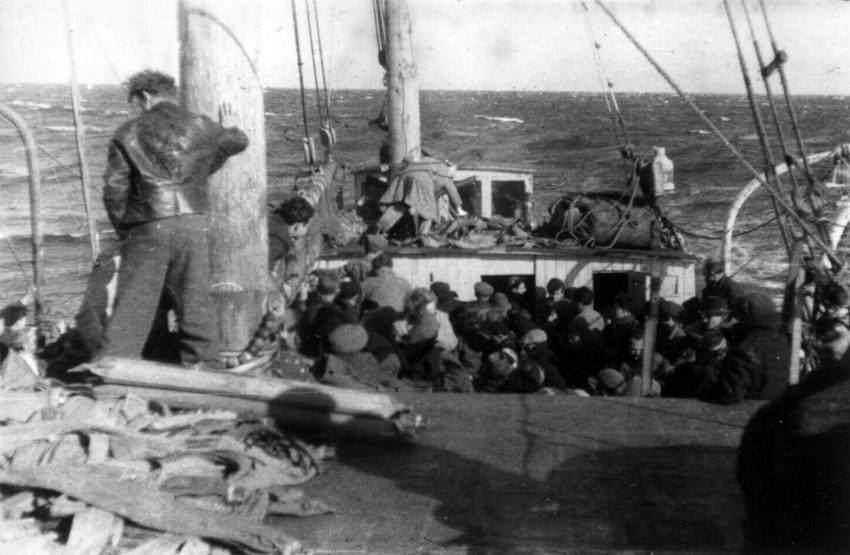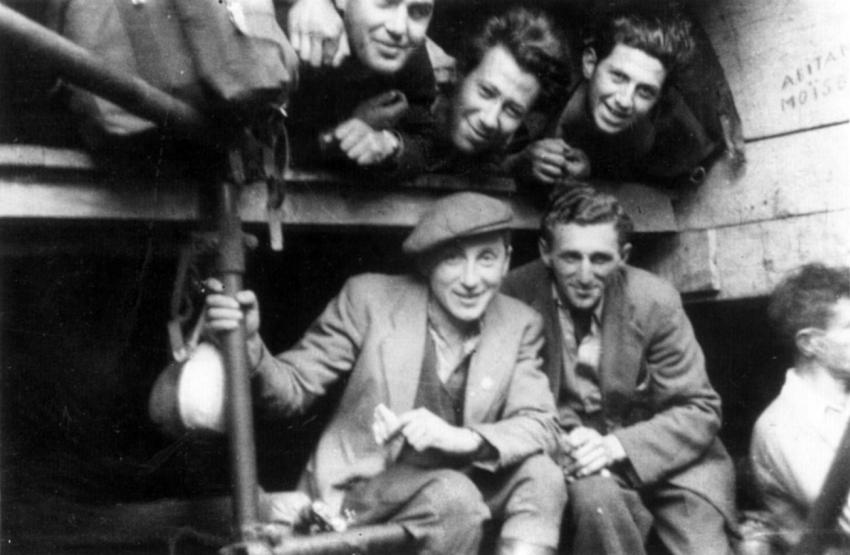After coming under Soviet control in 1939 they were expelled from their home in Poland on the Lithuanian border and sent to Siberia. From there they made their way to Uzbekistan, surviving primarily due to their resourcefulness.
In 1946 the family learned that a Repatriation Agreement had been signed and they began their journey back to Poland. During their journey home they heard the first details about the destruction of European Jewry, including the Jews of their own community. Despite their desire to return to Druskieniki, they learned that it had been incorporated into the Soviet Union, so they continued to Stettin, which had been emptied of its German population. Yisrael’s parents took advantage of an opportunity to send him and his young cousins with a group of children that had been organized by the “Beriha” movement to travel via Berlin to the land of Israel. After a secret journey of a day and a half with no water or food on trucks, and a harrowing sea journey through a minefield, the group reached Berlin where the children were boarded in a children’s home at the Schlachtensee DP Camp.
Yisrael’s testimony about this period is poignant:
“We didn’t speak at all about what each one of us had experienced, rather we tried to look forward… this was true to the extent that we were five friends who studied together and hung out together, yet no one knew what anyone else had experienced. Aside from the fact that we vaguely knew that one of us had been in the Vilna ghetto and survived, that another had been in the forest and the third, like me had been in Russia. Yet each of us kept his story to himself.”
Yisrael’s parents and brother later succeeded in reaching Berlin and he was able to join them. Later the family went to a different camp by Kassel – a camp organized by the survivors themselves. In the “Tarbut” school that was established in the camp, the boys and girls studied both academic and vocational studies. There, Yisrael learned photography and received a Kodak camera as a gift from a former photographer from his hometown whom he came across in the camp.
Yisrael used the camera to document his family’s departure from Europe aboard the rickety clandestine immigration ship “Kaf-tet BeNovember” (“the 29th of November, the anniversary of the UN decision to end the British mandate and establish the State of Israel) which set sail for Palestine from the port of Bandol, France in December 1947 carrying approximately 700 immigrants.
The prospective immigrants (known as ma’apilim) set sail on December 13, switching to a ship in even poorer condition along the way. After 10 days, west of the Island of Crete, a British destroyer began escorting the ship, and within a few days 4 destroyers surrounded it and towed it into Haifa port.
In his testimony Yisrael describes their arrival in Haifa:
“When we entered the port we all stood on the deck of the ship and sang “Hatikvah”. It was very moving; there were those of us who cried.”
Yisrael took photographs throughout the entire ship journey, going below deck while still at sea to develop the two reels of film with chemicals he had brought from the camp in Germany. After the reels had dried, Yisrael wound them around his leg to hide them from the British search when they were taken off the ship and detained.
The British transferred the ma’apilim to a barge that transported them to Cyprus, where they were held in a detention camp for approximately five months until they were allowed to enter the Land of Israel. The films faded due to the conditions they had been produced in as well as Yisrael’s inability to care for them during his extended stay in the camp. Only in 1956 in Israel was Yisrael able to restore them using special technology.
Yad Vashem Artifacts Collection
Gift of Yisrael Mei Tal (Montwiliski), Ramat ha-Sharon, Israel
